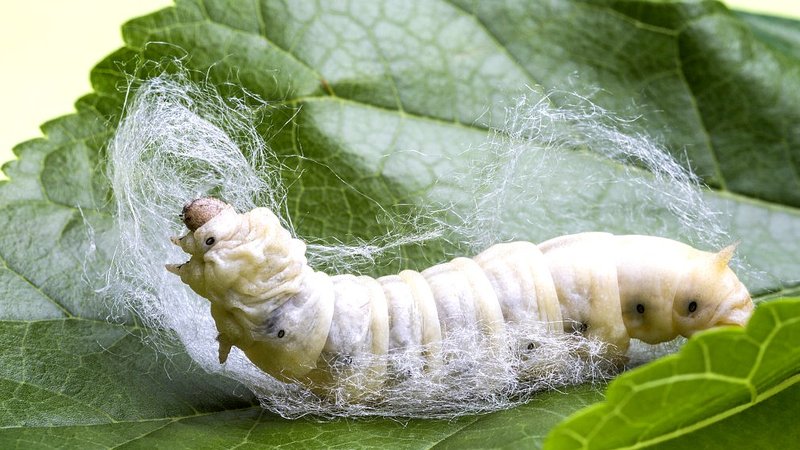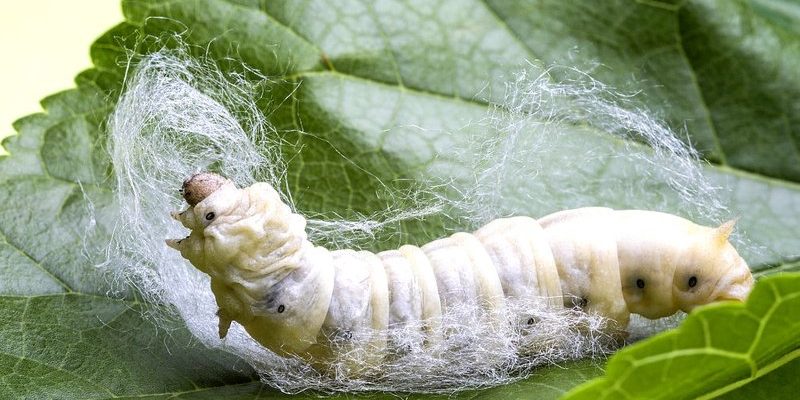
Think of it like comparing a house cat and a wild tiger. They both belong to the same family but live very different lives. Wild silkworms have adapted to their natural environment, while domesticated silkworms have been cultivated over centuries to meet our needs. This article will dive into the fascinating world of silkworms, exploring the unique traits and behaviors of both types. By the end, you’ll get a clearer picture of these remarkable creatures and why understanding their differences matters.
What Are Wild Silkworms?
Wild silkworms, primarily belonging to the species *Bombyx mori*, are found in various regions around the world, especially in temperate climates. Unlike their domesticated cousins, wild silkworms have adapted to survive in the wild, feeding on different types of leaves—like mulberry, oak, and even fruit trees. Imagine them as the free spirits of the insect world, darting around, munching on whatever suits their palate.
One crucial aspect of wild silkworms is their life cycle, which is closely tied to their surroundings. They typically experience more fluctuations in their population due to predators and environmental conditions. In nature, they face challenges that keep their numbers in check. Think of it as nature’s way of ensuring that only the strongest survive, which helps maintain a robust ecosystem.
Another key difference lies in their silk. Wild silkworms produce silk that is generally stronger and less uniform than that of domesticated silkworms. The silk filament can vary in thickness and texture, making it less desirable for textile production. So, while their silk might be tougher, it’s not always suitable for the luxurious fabrics we associate with silk today.
Characteristics of Domesticated Silkworms
Domesticated silkworms have a long history of association with humans. They’ve been bred specifically for silk production for thousands of years. These little critters are usually kept in controlled environments, allowing for maximum silk yield. Picture a cozy greenhouse where silkworms are pampered with just the right amount of food, temperature, and light. Unlike wild silkworms, they’re pretty dependent on humans for their survival and reproduction.
One significant characteristic of domesticated silkworms is their diet. They primarily eat mulberry leaves, which are specially cultivated to maximize silk production. Think of them as culinary connoisseurs—they need specific meals to thrive and produce that shiny silk we love. This diet not only influences the quality of the silk but also makes them more vulnerable to diseases.
In terms of silk production, domesticated silkworms are champions. Their silk is usually smoother, finer, and more consistent, making it highly sought after in the fashion industry. Each cocoon can yield a long, continuous strand of silk, which is perfect for weaving beautiful fabrics. So, while they may not have the wild instincts of their counterparts, they’ve certainly perfected the art of silk-making in their own way.
Life Cycle Differences
The life cycle of wild and domesticated silkworms showcases some fascinating differences. Wild silkworms follow a natural cycle that can vary based on environmental conditions. They undergo several stages: egg, larva (caterpillar), pupa (cocoon), and adult moth. But here’s the catch—wild silkworms can choose their timing based on food availability and climate, which makes each cycle unpredictable.
On the flip side, domesticated silkworms have a more regulated life cycle due to human intervention. Farmers control conditions like temperature and humidity, allowing silkworms to hatch and grow in a consistent manner. This means that the entire process from egg to adult moth can be timed precisely to meet production demands. Imagine it like a well-oiled machine, where everything is optimized for efficiency.
It’s also worth noting that domesticated silkworms often do not reproduce naturally. They’ve been bred in captivity to lose some of their natural instincts. As a result, they tend to be less adaptable to changing environments. In contrast, wild silkworms might struggle in captivity but are equipped to deal with the challenges of the wild.
Behavioral Differences
Behavior is another area where wild and domesticated silkworms diverge significantly. Wild silkworms are more active and alert, constantly looking out for predators. They have developed survival instincts that allow them to thrive in their natural habitats. Think of them as the ultimate survivors, reacting quickly to threats and seizing opportunities for food.
In comparison, domesticated silkworms are pretty docile. They’ve become accustomed to human care and generally lack the defensive behaviors of their wild relatives. Instead of worrying about predators, they focus on their primary goal—eating and spinning silk. This makes them easier to manage in a farming setting, but it also means they’ve lost some of the survival skills that wild silkworms possess.
Interestingly, the absence of natural threats in their environment can lead to a lack of genetic diversity among domesticated silkworms. Since they breed within a closed population, this can result in a more homogenous group. Wild silkworms, on the other hand, maintain genetic diversity by interacting with various environmental factors that influence their breeding.
Silk Quality Differences
Let’s talk about silk quality—because after all, that’s why we’re interested in silkworms, right? The silk produced by wild silkworms is typically stronger and more durable than that from domesticated ones. This is largely due to their natural diet and the environmental conditions they endure. However, while their silk may have more character, it often lacks the smoothness and consistency needed for high-end textiles.
Domesticated silkworms, on the other hand, produce silk that is incredibly fine and lustrous. The controlled breeding and feeding processes lead to silky strands that are ideal for weaving luxurious fabrics. This silk is often what you think of when you envision the shimmering materials used in fashion today.
That said, *not all silk is created equal*. There are premium grades of silk, like mulberry silk, that come specifically from domesticated silkworms. This silk has become synonymous with luxury, thanks to its all-around quality, softness, and sheen. While it’s true you can find beautiful variations in wild silk, domesticated silk generally reigns supreme in the textile market.
Environmental Impact and Sustainability
The impact of silkworm farming on the environment is another important aspect to consider. Wild silkworms thrive in natural ecosystems, playing a role in maintaining biodiversity. They contribute to their environments by serving as a food source for other species and helping to pollinate plants.
Domesticated silkworm farming, however, can come with environmental concerns. Large-scale silk production often requires an extensive amount of mulberry leaves, which may lead to deforestation and habitat loss if not managed sustainably. Additionally, the use of pesticides in farming can have negative effects on local ecosystems.
That being said, many silk producers are beginning to adopt more sustainable practices, emphasizing organic farming methods and reduced chemical use. This shift helps minimize the environmental footprint while still meeting the demand for silk. So, while domesticated silkworms enable the luxury of silk fabrics, it’s crucial for farmers and consumers to consider the sustainability of their practices.
The Cultural Significance of Silkworms
Silkworms hold a special place in various cultures, particularly in regions where silk production has deep roots. For instance, countries like China and India have rich histories tied to silkworms, with traditions dating back thousands of years. Silkworm rearing isn’t just a means of production; it’s woven into the fabric of local customs and economies.
Additionally, wild silkworms often inspire folklore and art. In many cultures, they symbolize transformation and resilience, much like the metamorphosis they undergo from caterpillar to moth. This transformation has been embraced as a metaphor for growth and renewal in various philosophical traditions.
On the other hand, domesticated silkworms have shaped industries. The silk trade has played a crucial role in the economies of many regions, providing livelihoods for countless families. When you wear a silk scarf or a dress, you’re not just donning a piece of fabric; you’re participating in a heritage that spans generations.
Closing Thoughts
As we wrap up this journey through the world of silkworms, it’s clear that both wild and domesticated silkworms have their unique stories and contributions. While wild silkworms embody the beauty of nature’s design, domesticated silkworms represent humanity’s ingenuity. Understanding these differences isn’t just a matter of academic interest; it helps us appreciate the delicate balance between nature and our needs as consumers. So, whether you admire the resilience of wild silkworms or the luxury of their domesticated counterparts, both have a vital role in our world.

